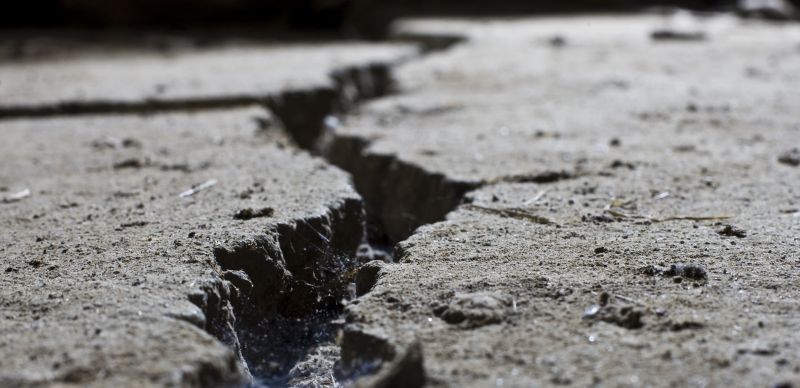Favorite Concrete Repair Solutions for Easy and Effective Fixes
Select from popular repair products that simplify the process and provide durable, professional-quality results.
 Concrete repairs are a common necessity in maintaining the integrity and appearance of various surfaces, including driveways, sidewalks, foundations, and decorative elements. Selecting the right products for concrete repair involves understanding the specific type of damage, whether it is cracking, spalling, or surface deterioration. Repair products are designed to restore strength, prevent further damage, and improve the longevity of concrete structures. It is important to assess the extent of the damage and choose appropriate materials that match the existing concrete in terms of texture and color when visible repairs are involved.
Concrete repairs are a common necessity in maintaining the integrity and appearance of various surfaces, including driveways, sidewalks, foundations, and decorative elements. Selecting the right products for concrete repair involves understanding the specific type of damage, whether it is cracking, spalling, or surface deterioration. Repair products are designed to restore strength, prevent further damage, and improve the longevity of concrete structures. It is important to assess the extent of the damage and choose appropriate materials that match the existing concrete in terms of texture and color when visible repairs are involved.
Top Overall Option
Multi-Purpose Concrete Repair Compound
A versatile repair compound suitable for filling cracks, patches, and surface defects on various concrete surfaces. It offers good adhesion, durability, and ease of application, making it a reliable choice for both small and large repairs. This product can be used indoors and outdoors, providing a seamless finish that helps restore the structural integrity of concrete structures.
Types of Products For Concrete Repairs
Epoxy Injection Systems
Designed for crack sealing and structural repairs, epoxy injections penetrate deep into cracks to restore strength and prevent water infiltration.
Polyurethane Sealants
Flexible sealants ideal for sealing dynamic cracks that may expand or contract with temperature changes.
Concrete Patching Mortars
Heavy-duty mortars used to fill large holes, spalls, and surface defects with strong adhesion properties.
Surface Sealers
Protective coatings that seal the surface, preventing water penetration and surface deterioration.
Self-Leveling Overlays
Thin, smooth overlays that restore flatness and improve the appearance of worn or damaged concrete surfaces.
Crack Fillers
Ready-to-use compounds for quick filling of small cracks and surface imperfections.
Hydraulic Cements
Fast-setting cements used to stop active leaks and repair structural cracks in concrete.
Bonding Agents
Primers that improve adhesion between old and new concrete layers during repairs.
Resurfacing Products
Thin coatings that rejuvenate worn surfaces, offering a fresh, uniform appearance.
Polymer Modified Repair Mixes
Enhanced mortars that provide increased flexibility and adhesion for demanding repair scenarios.
Fiber-Reinforced Repair Materials
Products embedded with fibers to improve tensile strength and crack resistance.
Repair Grouts
Fluid mixes used to fill voids and anchor posts or fixtures into concrete.
Popular Choices
Widely used for sealing minor cracks to prevent water ingress and further damage.
Preferred for filling larger cracks and joints, offering flexibility and durability.
Convenient options for quick patching of surface imperfections and small holes.
Popular for protecting concrete surfaces from moisture-related deterioration.
Commonly used for emergency repairs and structural crack sealing.
Chosen for restoring worn or spalled surfaces with a smooth, uniform finish.
Versatile kits suitable for bonding, filling, and sealing cracks and holes.
Applied to improve appearance and provide additional protection to concrete surfaces.
Popular for overlays that require enhanced adhesion and flexibility.
Preferred for high-stress areas requiring extra crack resistance.
Used to seal expansion and contraction joints to accommodate movement.
Common for filling voids and anchoring fixtures securely.
Various repair products are formulated to address different issues, such as cracks, holes, or surface scaling. For small cracks, epoxy or polyurethane injections can provide effective sealing solutions, preventing water infiltration and further deterioration. For larger holes or spalled areas, patching compounds and mortars offer a durable solution that bonds well with existing concrete. Surface sealers and overlays can also be used to protect repaired surfaces from future damage caused by weather or regular wear and tear.
Proper application of these products is crucial for achieving optimal results. Surface preparation, including cleaning and etching, ensures good adhesion. Follow manufacturer instructions regarding curing times and environmental conditions to maximize the effectiveness of repairs. Regular maintenance and timely repairs help extend the lifespan of concrete structures, preserving their function and appearance in settings such as residential driveways, commercial walkways, and industrial foundations.
Choosing the right concrete repair products involves considering factors like the type of damage, the location of the repair, and the desired finish. Whether dealing with minor surface cracks or major structural issues, there are numerous options available to suit various needs. Consulting with professionals or researching product specifications can aid in making informed decisions that contribute to the durability and safety of concrete surfaces in Longmont, CO, and beyond.
Key Buying Considerations
- Identify the type and extent of damage to select the appropriate repair product.
- Consider whether the repair is structural or cosmetic to determine the product's strength requirements.
- Check compatibility of the product with existing concrete surfaces for adhesion and finish.
- Assess environmental conditions such as temperature and humidity during application and curing.
- Decide if a quick-setting or slow-curing product is needed based on project timeline.
- Evaluate ease of application, including tools required and surface preparation steps.
- Consider the appearance after repair, especially for visible surfaces, to match existing textures and colors.
- Determine the durability and weather resistance needed for outdoor or high-traffic areas.
- Review product safety and handling instructions to ensure proper use.
- Check for any additional materials or primers required for optimal adhesion.
- Estimate the quantity needed based on the size of the repair area to avoid shortages.
- Look into compatibility with other repair materials if multiple products are used in conjunction.
- Consider budget constraints while balancing quality and longevity of the repair.
- Research user reviews and expert recommendations for insights on product performance.
